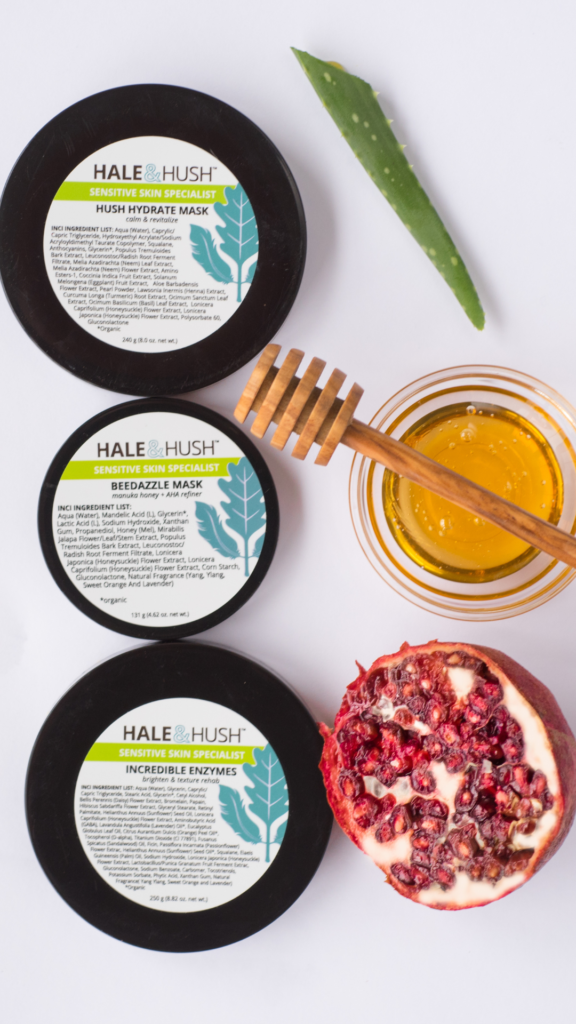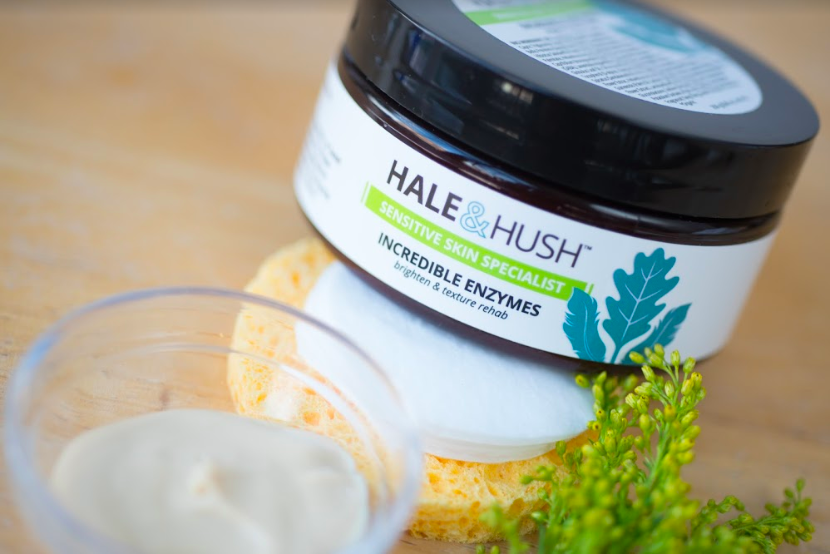Resurfacing sensitive skin may create challenges for more aggressive for more aggressive resurfacing treatments, however, sensitive skin needs resurfacing. Resurfacing treatments help to restore a more youthful complexion by removing the most damaged outer layers of skin to reveal the healthier-looking skin beneath and encouraging new, cell growth. Enzymes and AHA Acids can help sensitive skin renew and refresh while boosting cell function and creating healthier skin.

Contribution by Shawna Rocha
Shawna Rocha is the owner of Awaken Day Spa in California and Washington. She quickly developed a love for helping clients with compromised and sensitive skin and constantly strives to gain additional knowledge and education. Since becoming an esthetician, she has completed multiple advanced courses in Oncology Esthetics, Immuno-Esthetics, and has specialized training in sensitive skin and holistic therapies. Shawna holds several certifications, including a NCEA certification, and has recently become the Director of Education for Hale and Hush Skincare. Shawna won two awards in the Skin Games 2018 (People’s Choice & Acne/Problematic Skin) and became a judge for two categories in 2019. Shawna’s current passion is writing blogs and articles regarding the skincare industry and has recently become a Dermascope Ambassador. She is truly loved by her clients and colleagues and her passion for the industry is apparent in all that she does.

Enzymes For Resurfacing Sensitive Skin
Most of the enzymes used in skincare products are sourced from fruits and vegetables, such as papaya, pineapple and pumpkin. Enzymes are less exfoliating than acids like glycolic, lactic or salicylic acid, so they are more appropriate for those with highly sensitive skin or skin that is thin and prone to reactivity. They are much less likely to cause irritation. Enzymes in skincare can help smooth texture, brighten skin tone, and create efficient product penetration.
A go to option for an enzyme to use on sensitive skin is the Incredible Enzymes by Hale & Hush.
Alpha Hydroxy Acids (AHA) For Resurfacing Sensitive Skin
Alpha-hydroxy acids (AHAs) are a group of water-soluble plant and animal-derived acids used in a variety of skincare products. AHAs are used most often as exfoliants, but they can also promote collagen growth, improve blood flow, reduce hyperpigmentation, diminish the appearance of fine lines and wrinkles, prevent acne breakouts, brighten complexion, and increase product absorption. Some of the favorite AHAs include glycolic, lactic acids, malic acids, tartaric, citric, and mandelic. A go-to option for an AHA to use on sensitive skin is the Beedazzle Revitalize by Hale & Hush.
6 AHA For Resurfacing Sensitive Skin
1 Glycolic acid
This AHA is sometimes too harsh for the most sensitive clients so use with caution.
Glycolic acid can be derived from sugarcane, the synthetic form is the one most often used in skin care products because it’s easier to stabilize. What makes glycolic acid special is its size and ability to penetrate the uppermost layers of built-up skin to reveal the healthy skin beneath. It also has a natural ability to hydrate skin as a natural humectant, drawing water into the skin and providing a hydrated glow as it exfoliates. Used alone or with other AHAs, it helps enhance skin’s firmness and resilience while improving the signs of aging.

Brighten + Texture Rehab
Hale & Hush Incredible Enzymes
A powerhouse against lusterless skin, Incredible Enzymes optimizes skin’s complexion at a surface and cellular level via a blend of botanical exfoliating enzymes and refinement assistants that work together to rejuvenate texture and tone for clarity that can be felt and seen.
2 Lactic acid
When it comes to lactic and glycolic acid, while both AHAs offer exfoliating results, lactic acid tends to be the gentler option of the two, as it has a larger molecule size, meaning it exfoliates on a surface level and hydrates the top layer of skin.
Lactic acid can be derived from milk or made synthetically. The synthetic form is used most often in skin care products because it’s easier to stabilize and ensure consistent results. Lactic acid does everything glycolic acid does, but just a bit slower because its molecule is a little bit larger, which slightly reduces its ability to penetrate the skin’s outermost layer. The topical lactic acid can hydrate skin; when used alone or with other AHAs, it begins working as an exfoliant for reducing the appearance of dark spots and providing a more even complexion.
3 Malic acid
Malic acid is another great acid for exfoliation and hydration.
Malic acid is another great acid for exfoliation and hydration. This AHA can be derived from apples or produced synthetically. Malic acid is larger size molecule than glycolic and lactic acids, but is still able to exfoliate, and it also delivers antioxidant benefits.
4 Tartaric acid
Tartaric acid is larger in size than malic acid and is nearly twice as large as glycolic acid. It occurs naturally in grapes but is also made synthetically. Although tartaric acid can exfoliate skin, it functions best in helping to maintain the pH range that other AHAs need to work their magic.
5 Citric acid
Low amounts of citric acid show up in many skin care products where it works as an antioxidant as well as a pH adjuster.
Citric acid comes from various citrus fruits but also can be made synthetically. Although in higher concentrations it can exfoliate skin, it’s also considered more irritating due to its naturally lower pH.
6 Mandelic acid
Mandelic acid is derived from bitter almonds and is considered the “gentle giant”.
This AHA is a must for sensitive skin, due to its larger size means slower penetration into skin, making it a perfect choice for sensitive skin. Mandelic acid accelerates cell turnover, and collagen production, retexturizes skin, and functions as a powerful exfoliate to remove dead skin cells.

